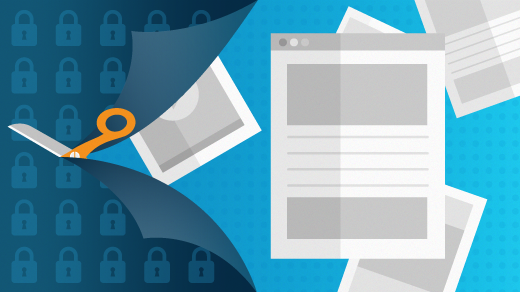Encryption and security for protecting files and sensitive documents have long been a concern for users. Even as more and more of our data is housed on websites and cloud services, protected by user accounts with ever-more secure and challenging passwords, there's still great value in being able to store sensitive data on our own filesystems, especially when we can encrypt that data quickly and easily.
Age allows you to do this. It is a small, easy-to-use tool that allows you to encrypt a file with a single passphrase and decrypt it as required.
Install age
Age is available to install from most Linux repositories.
To install it on Fedora:
$ sudo dnf install age -yOn macOS, use MacPorts or Homebrew. On Windows, use Chocolatey.
Encrypting and decrypting files with age
Age can encrypt and decrypt files with either a public key or a passphrase set by the user.
Using age with a public key
First, generate a public key and write the output to a key.txt file:
$ age-keygen -o key.txt
Public key: age16frc22wz6z206hslrjzuv2tnsuw32rk80pnrku07fh7hrmxhudawase896m9Encrypt with a public key
To encrypt a file with your public key:
$ touch mypasswds.txt | age -r ageage16frc22wz6z206hslrjzuv2tnsuw32rk80pnrku07fh7hrmxhudawase896m9 > mypass.tar.gz.ageIn this example, the file mypasswds.txt is encrypted with the public key I generated and put inside an encrypted file called mypass.tar.gz.age.
Decrypt with a public key
To decrypt the information you've protected, use the age command and the --decrypt option:
$ age --decrypt -i key.txt -o mypass.tar.gz mypass.tar.gz.ageIn this example, age uses the key stored in key.text and decrypts the file I created in the previous step.
Encrypt with a passphrase
Encrypting a file without a public key is known as symmetrical encryption. It allows a user to set the passphrase to encrypt and decrypt a file. To do so:
$ age --passphrase --output mypasswd-encrypted.txt mypasswd.txt
Enter passphrase (leave empty to autogenerate a secure one):
Confirm passphrase:In this example, age prompts you for a passphrase, which it uses to encrypt the input file mypasswd.txt and render the file mypasswd-encrypted.txt in return.
Decrypt with a passphrase
To decrypt a file encrypted with a passphrase, use the age command with the --decrypt option:
$ age --decrypt --output passwd-decrypt.txt mypasswd-encrypted.txt
In this example, age prompts you for the passphrase, then decrypts the contents of the mypasswd-encrypted.txt file into passwd-decrypt.txt, as long as you provide the passphrase that matches the one set during encryption.
Don't lose your keys
Whether you're using passphrase encryption or public-key encryption, you must not lose the credentials for your encrypted data. By design, a file encrypted with age cannot be decrypted without the key used to encrypt it. So back up your public key, and remember those passphrases!
Easy encryption at last
Age is a really robust tool. I like to encrypt my sensitive files, especially tax records and other archival data, into a .tz file for later access. Age is user-friendly and makes it very easy to get started with encryption on the go.







1 Comment